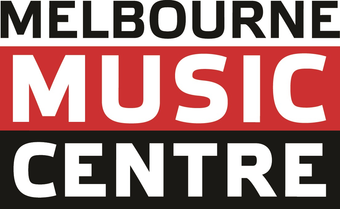In the realm of electric guitar, overdrive and distortion pedals reign supreme, shaping the sonic landscape and leaving an indelible mark on various genres. These pedals offer the means to add grit, aggression, and raw power to guitar tones, enabling musicians to create signature sounds that have become synonymous with rock, metal, and beyond. In this blog post, we delve into the captivating world of overdrive and distortion pedals, examining their purpose, differences, and profound impact on different musical genres.
Overdrive Pedals: Emulating the Amp's Sweet Spot
At its core, an overdrive pedal aims to replicate the natural breakup and saturation of a tube amplifier pushed to its limits. When a tube amp is cranked, the signal starts to exceed the headroom, resulting in a pleasant distortion that adds warmth, harmonics, and dynamic responsiveness to the guitar tone. Overdrive pedals strive to recreate this sought-after "sweet spot" of tube amp saturation.
1. Tonal Characteristics of Overdrive
Overdrive pedals offer a wide range of tonal characteristics, depending on the design and circuitry. They can produce anything from mild, bluesy breakup to a pushed, crunchy sound. Overdrive preserves the nuances of the guitar's dynamics and touch sensitivity, providing a responsive and dynamic playing experience. Guitarists often use overdrive to add a touch of grit and sustain to their clean or slightly overdriven tones.
2. Impact on Genres
Overdrive has played a pivotal role in shaping various genres of music. From blues and classic rock to indie and country, the warm and harmonically rich tones produced by overdrive pedals have become essential elements in these genres' sonic palettes. Legendary guitarists like Stevie Ray Vaughan, Eric Clapton, and Billy Gibbons have utilized overdrive to create iconic tones that define the sound of their respective genres.
Distortion Pedals: Unleashing Sonic Fury
While overdrive pedals aim to replicate the natural breakup of an amplifier, distortion pedals take things a step further by completely saturating the guitar signal. Distortion pedals provide a more aggressive and intense form of clipping, resulting in a heavier, more saturated tone.
1. Tonal Characteristics of Distortion
Distortion pedals generate a compressed and heavily saturated sound, often characterized by a higher gain structure compared to overdrive. This compression and saturation deliver sustain, harmonic richness, and a powerful sonic punch. Distortion pedals allow for controlled feedback and are favored by guitarists seeking to unleash a wall of aggressive and ferocious sound.
2. Impact on Genres
Distortion pedals have left an indelible mark on genres such as hard rock, heavy metal, and punk. The intense and searing tones produced by distortion pedals serve as the foundation for blistering solos, thunderous riffs, and adrenaline-fueled performances. Bands like Metallica, Black Sabbath, and Nirvana have used distortion to define the sound of their respective genres, influencing generations of guitarists to follow.
Choosing the Right Pedal: Personal Preference and Genre Exploration
The choice between an overdrive pedal and a distortion pedal ultimately depends on personal preference and the desired sonic outcome. Guitarists often experiment with different pedals to find the perfect balance of tone, gain, and responsiveness that suits their playing style and musical genre. Many guitarists even utilize both overdrive and distortion pedals in their setups, using them interchangeably to explore a wide range of tonal possibilities.
Popular Overdrive Pedals:
- Ibanez Tube Screamer: Known for its midrange boost and smooth overdrive, the Tube Screamer has been a staple in many guitarists' pedalboards, offering a versatile and iconic tone.
- Boss Super Overdrive: The SD-1 is a widely popular overdrive pedal, capable of producing smooth and dynamic overdrive tones. It is favored for its affordability and versatility, making it suitable for a wide range of musical styles.
- Boss Blues Driver: With its classic bluesy sound, the Blues Driver offers a warm and gritty overdrive that has found favor among blues and rock guitarists for decades.
- Klon Centaur: The Klon Centaur is highly regarded for its transparent and dynamic overdrive, allowing the natural tone of the guitar to shine through while adding a touch of breakup and sustain.
Popular Distortion Pedals:
- ProCo Rat: The Rat pedal delivers a wide range of distortion, from a smooth overdrive to a saturated and aggressive tone. Its versatility has made it a go-to choice for many rock and alternative guitarists.
- Electro-Harmonix Big Muff Pi: The Big Muff Pi is known for its massive fuzz and sustain, offering a thick and saturated distortion that has become synonymous with iconic guitar tones, particularly in genres like grunge and psychedelia.
- MXR Distortion+: This pedal has been a staple of rock and metal genres since the 1970s. It provides a classic, straightforward distortion sound with a focused midrange, perfect for players seeking a no-frills, high-gain tone.
- Boss DS-1: The DS-1 is a widely used distortion pedal, offering a range of crunch and saturation. Its affordability, durability, and versatility have made it a popular choice among guitarists of all genres.
Many of these pedals are intermittently available in our Japanese listings, check them out here!
Overdrive and distortion pedals are the driving forces behind the raw power and intensity associated with genres like rock and metal. While overdrive pedals aim to recreate the natural breakup and warmth of a cranked tube amp, distortion pedals push the boundaries of sonic saturation to deliver intense, aggressive, and ferocious tones.
These pedals have profoundly impacted the sonic landscapes of various genres, with overdrive contributing to the soulful expressiveness of blues and classic rock, while distortion serves as the backbone of heavy metal and punk. Guitarists continue to explore and push the boundaries, using these pedals as vehicles for artistic expression and genre-defining sound.
Whether you're seeking the creamy overdriven tones of blues or the crushing distortion of metal, embracing the world of overdrive and distortion pedals empowers guitarists to sculpt their unique sonic identities and unleash a tidal wave of creativity and expression.

